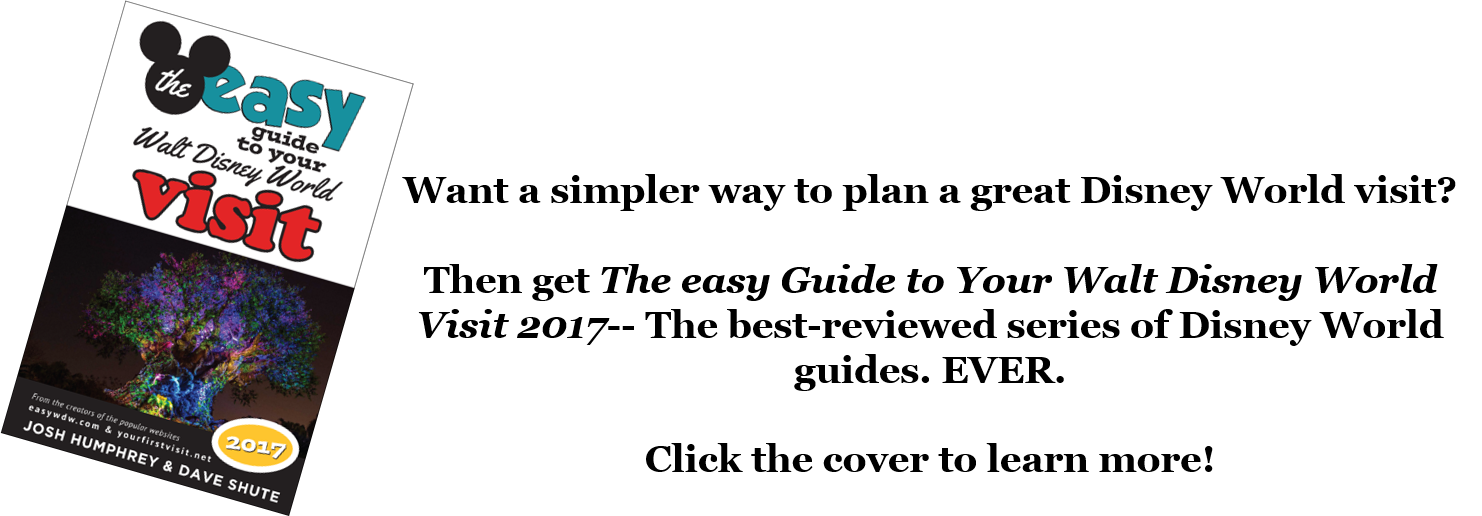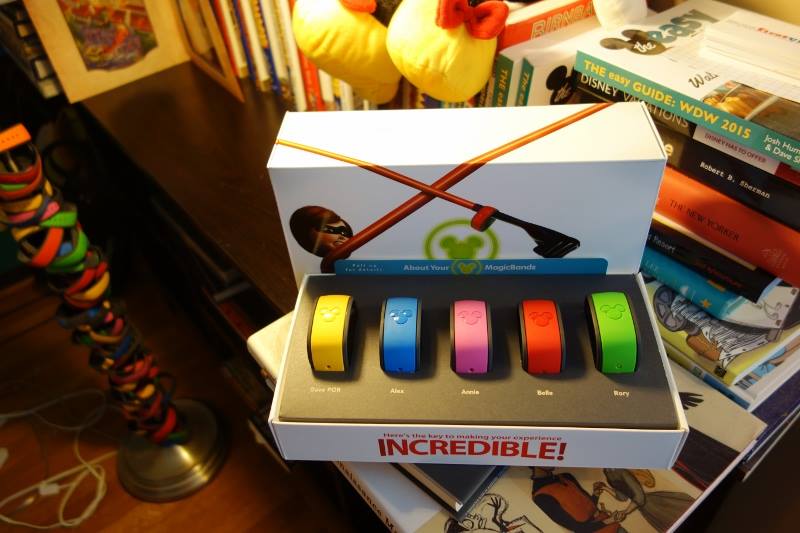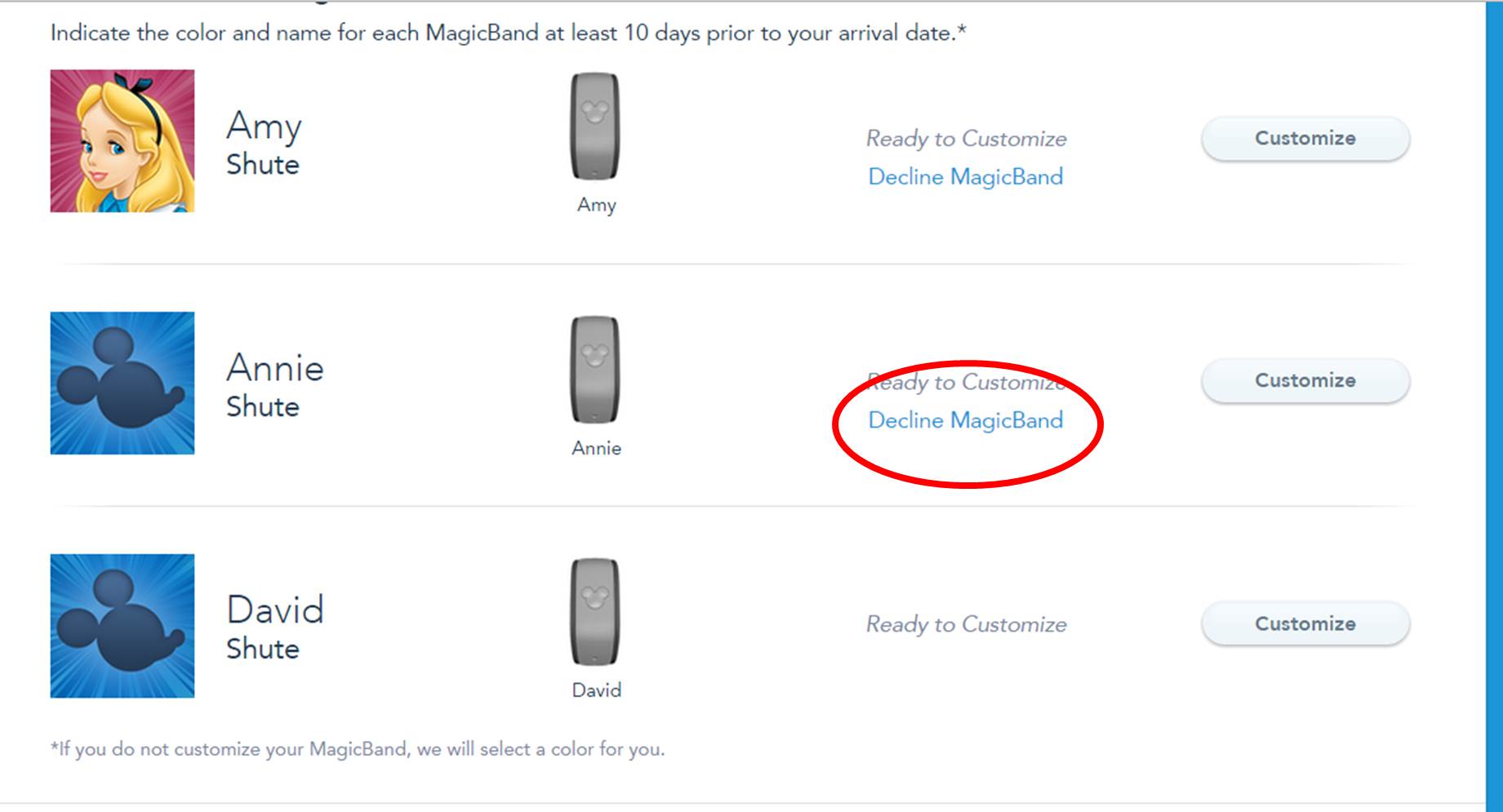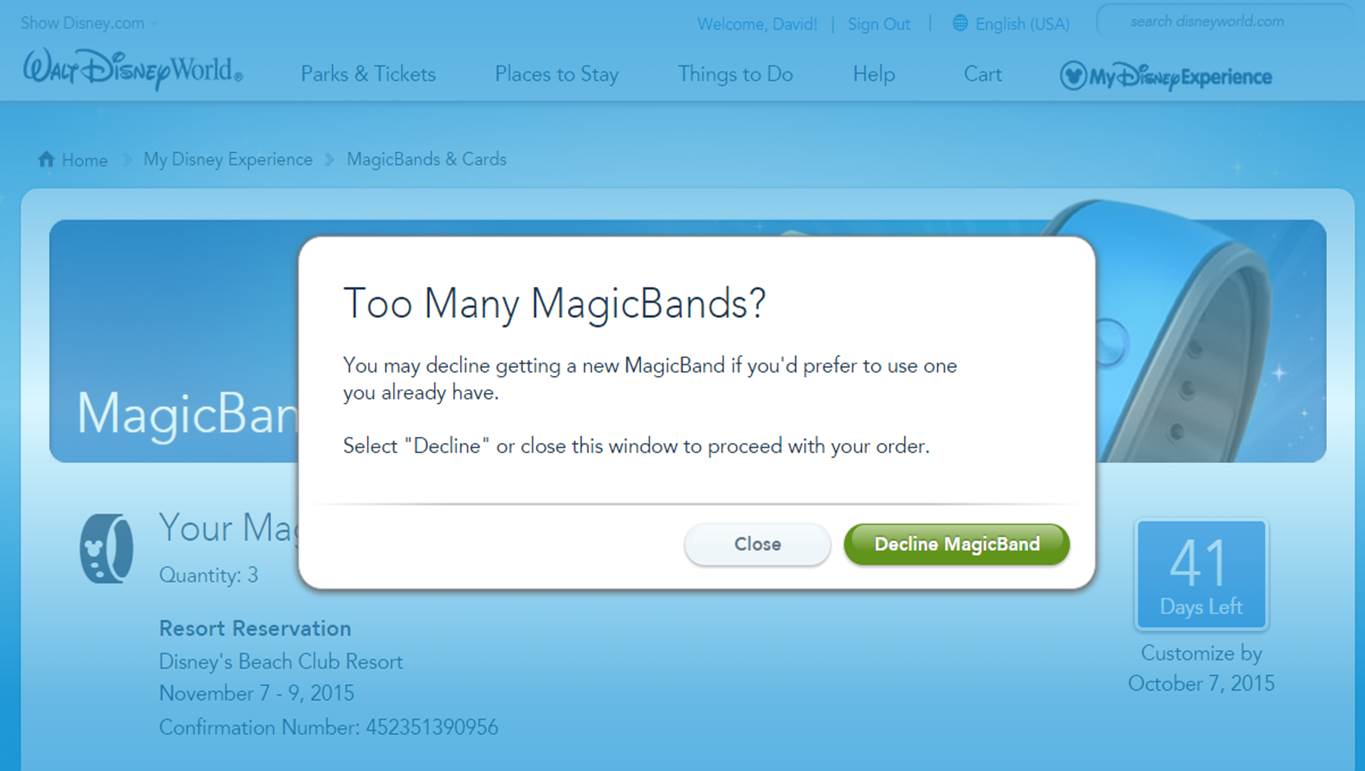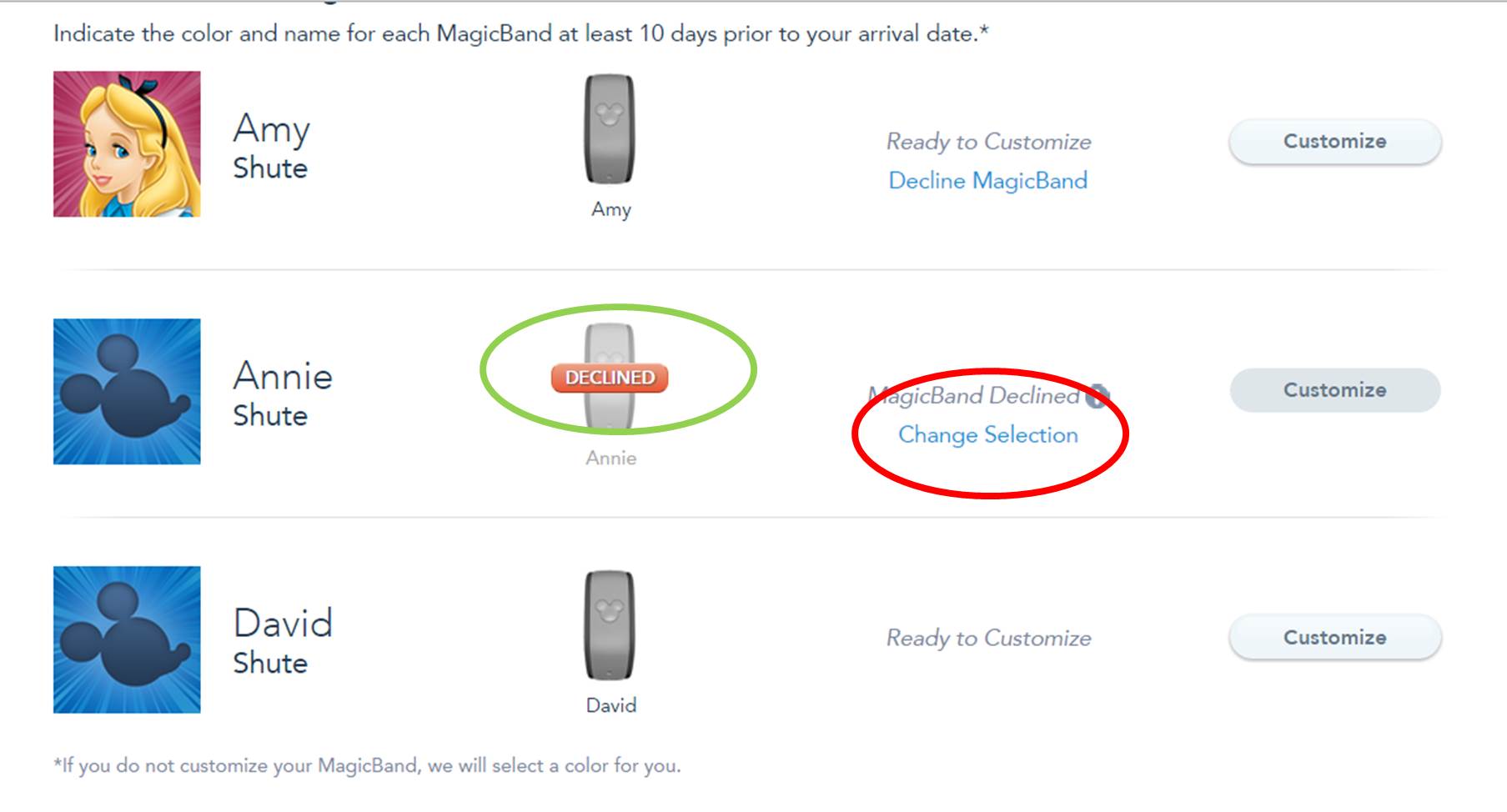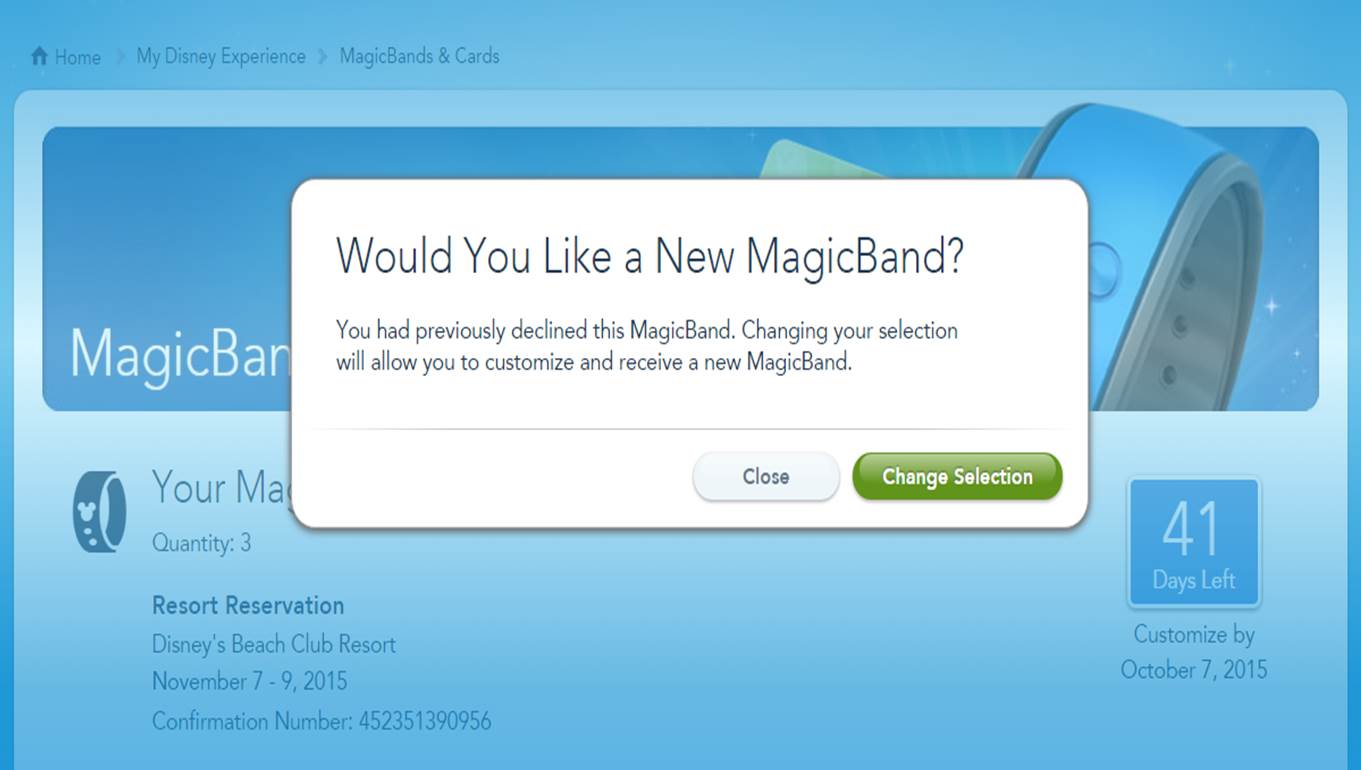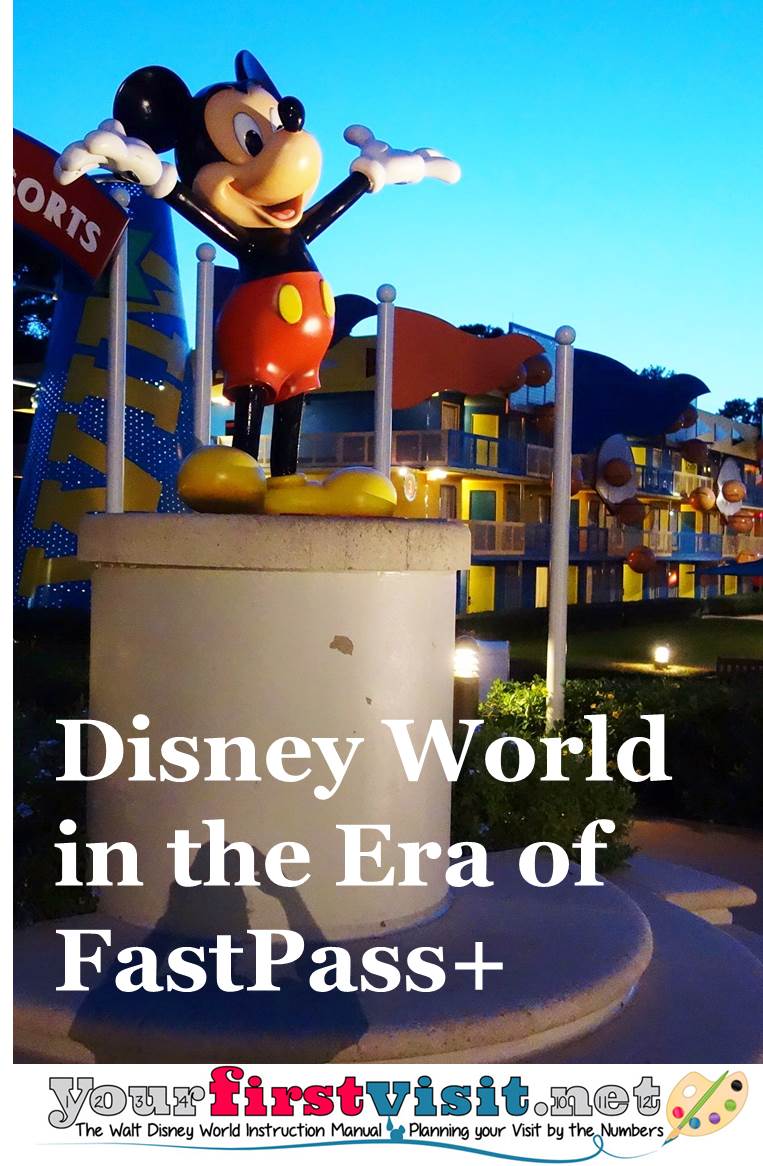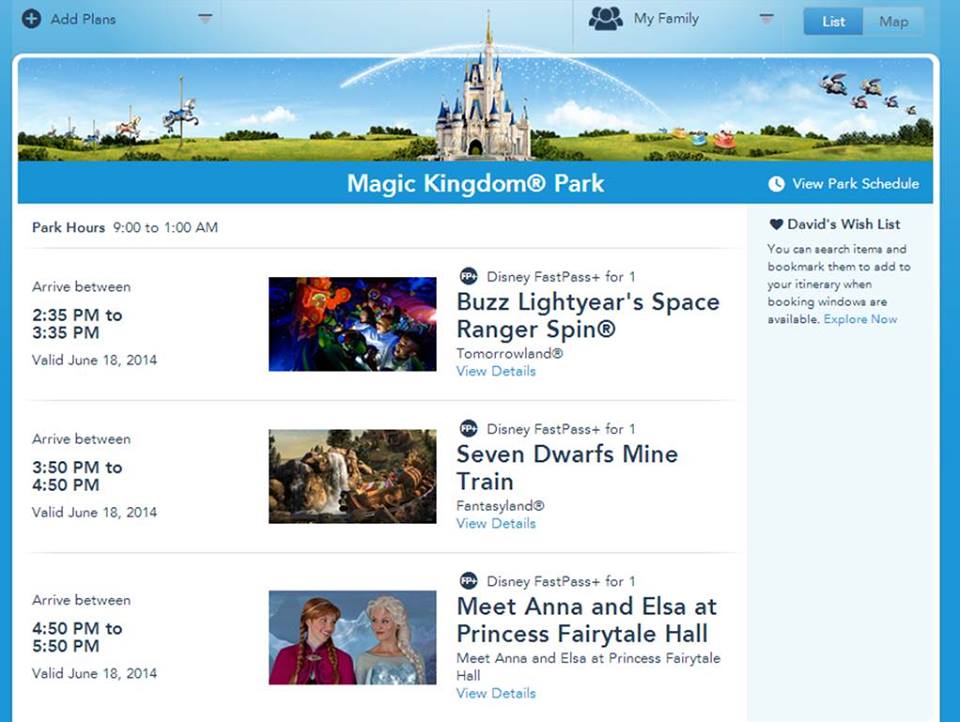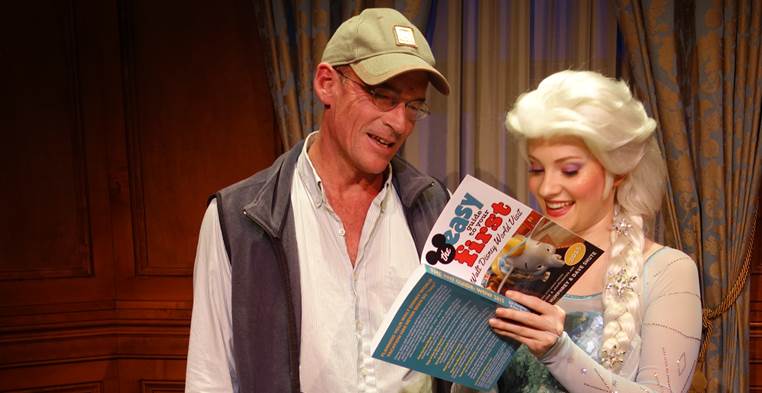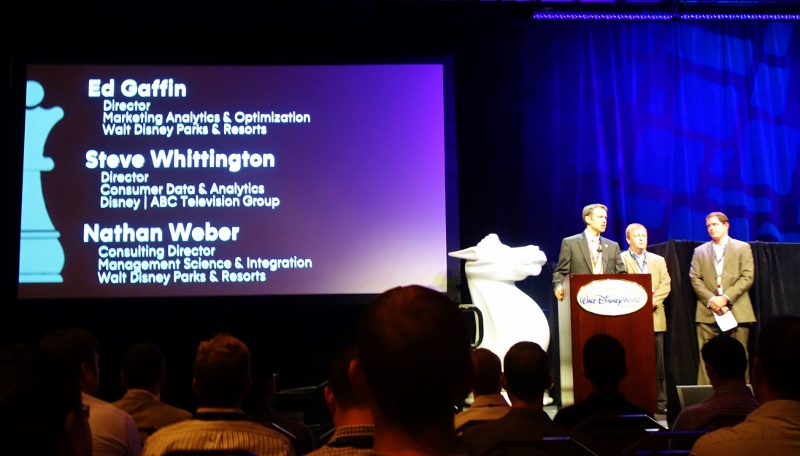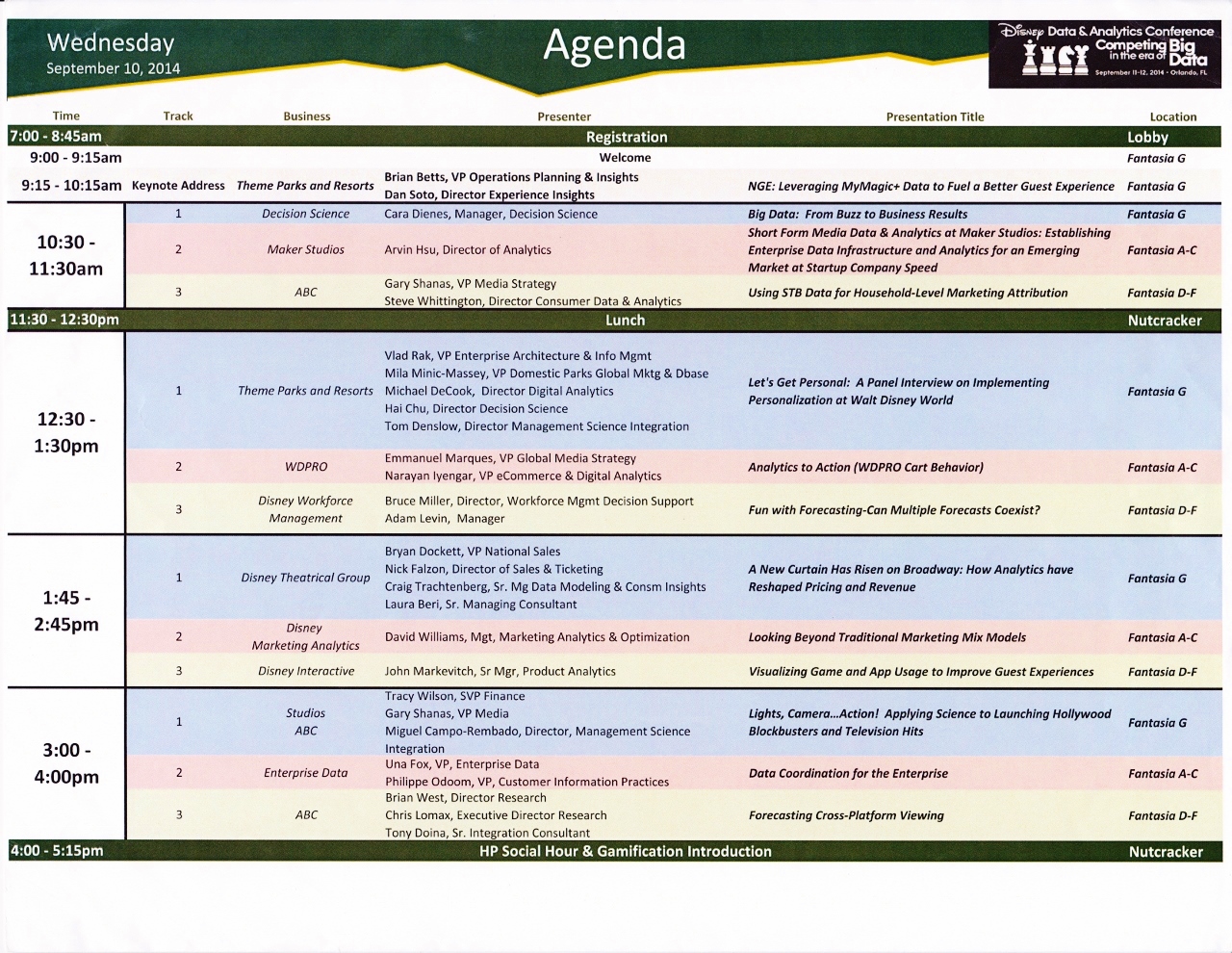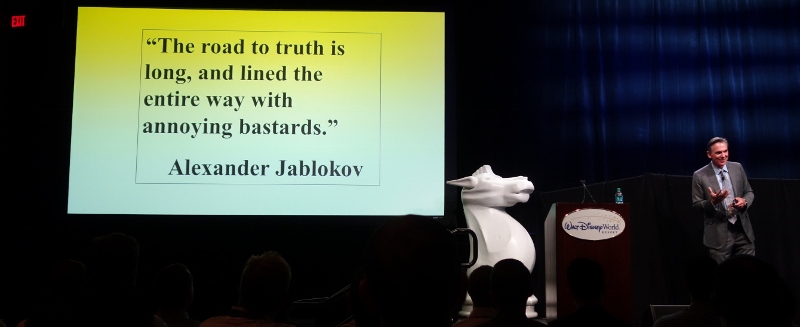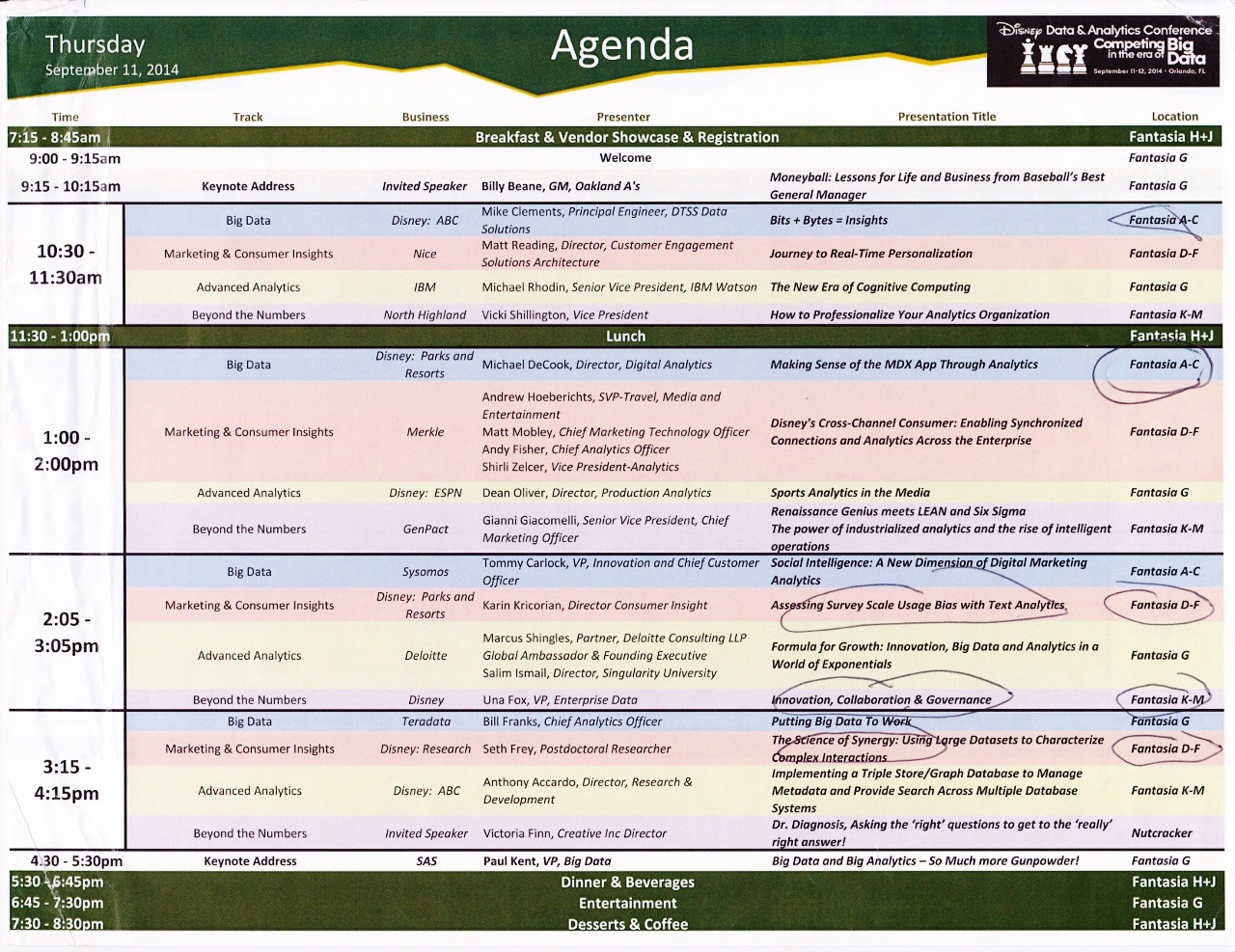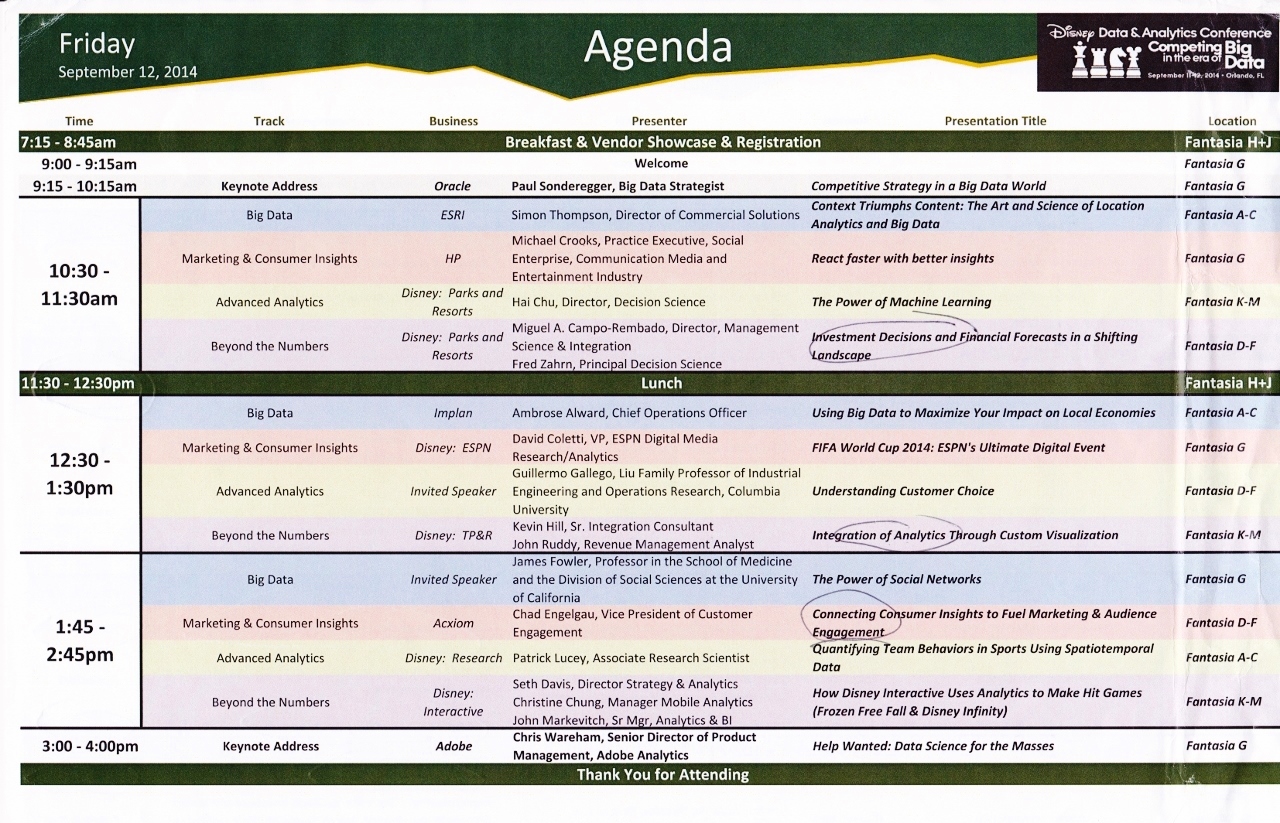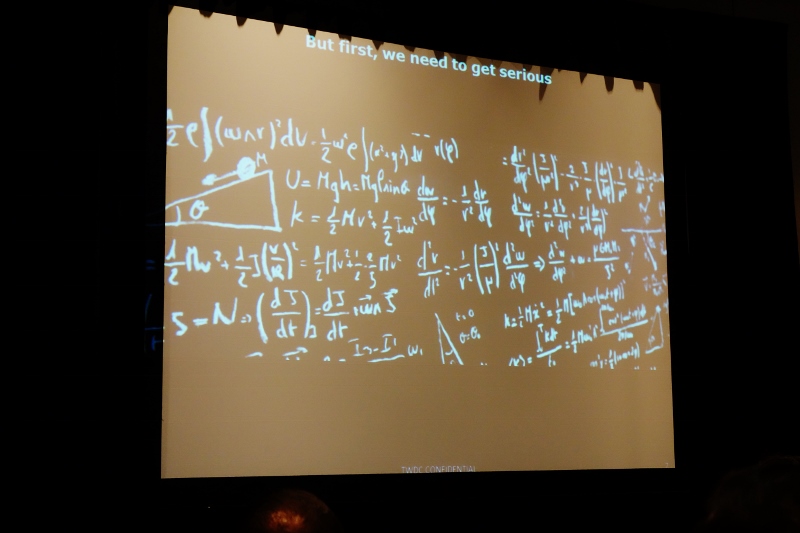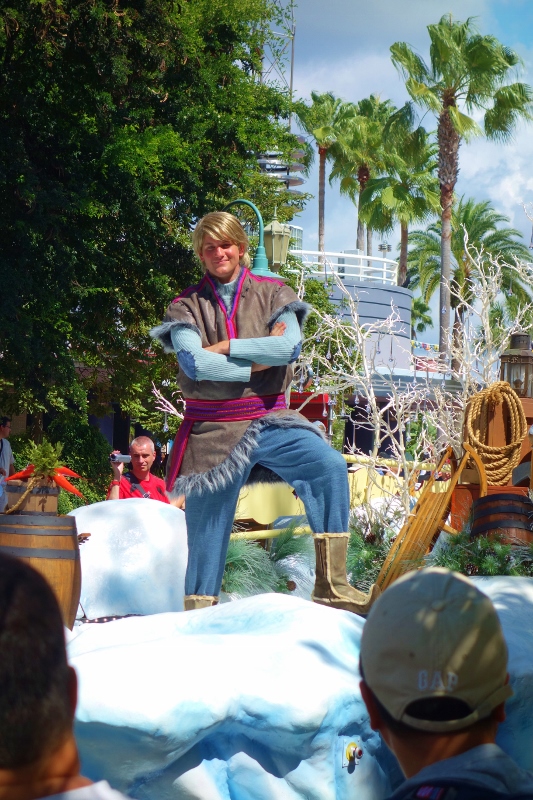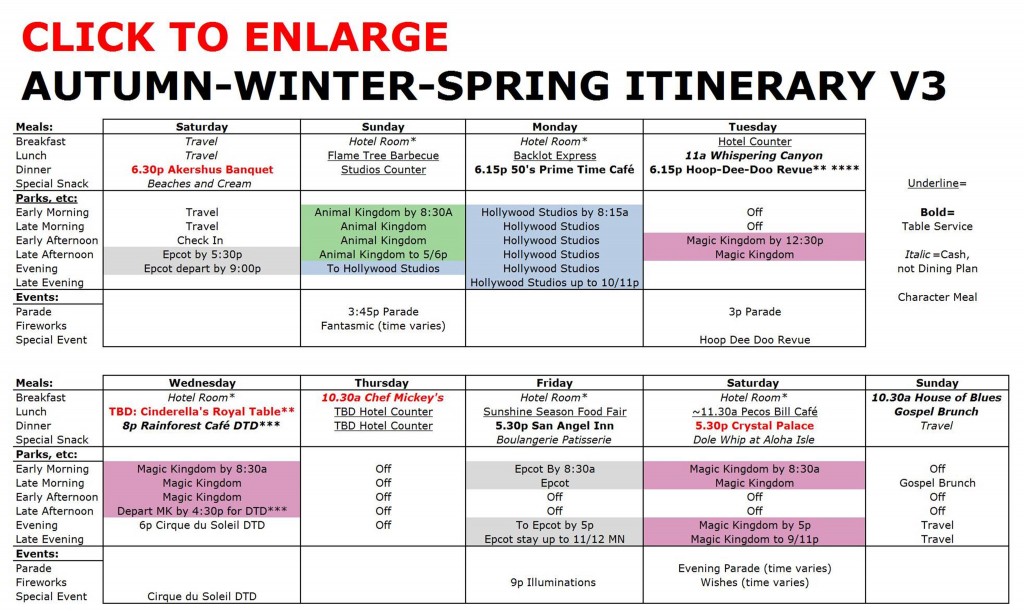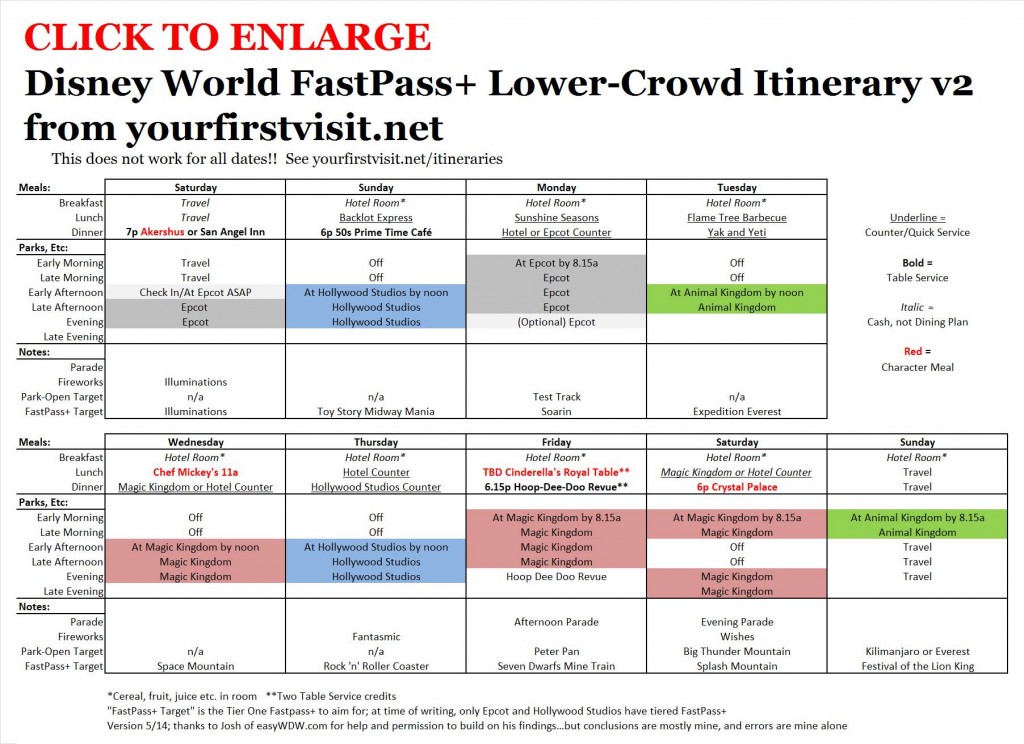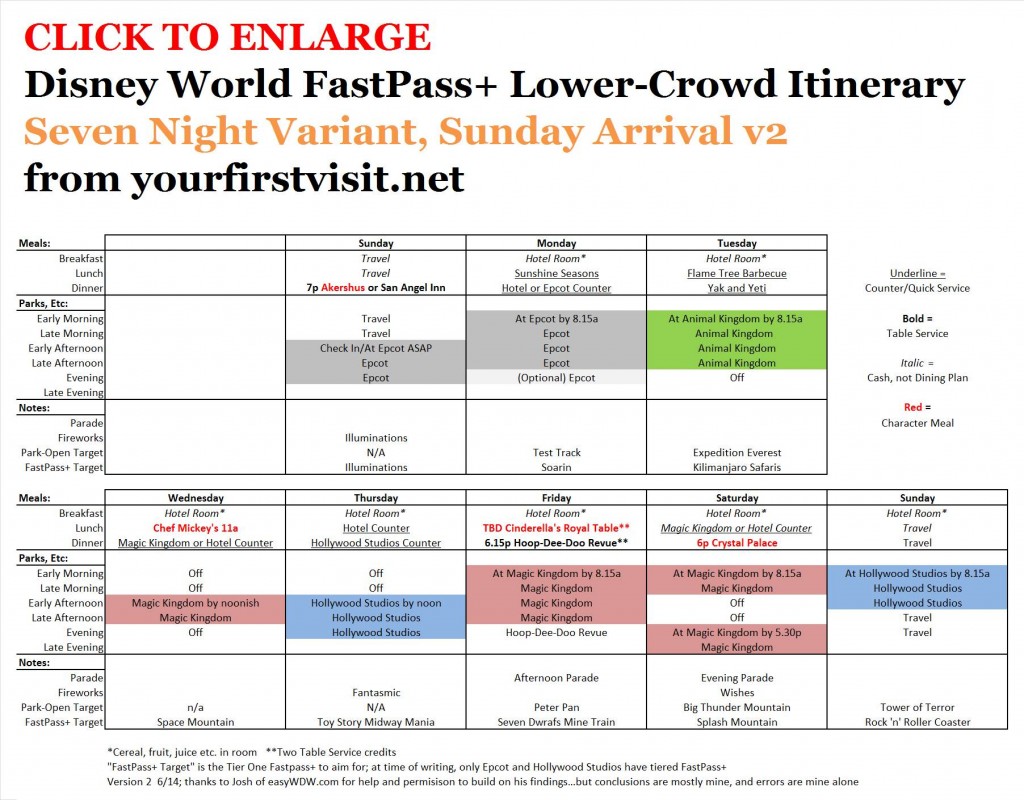Category — t. Disney’s MyMagic+ Project and Expansion Plans
Disney World to Open New Fifth Park, Themed to Sadness and Loss
FIFTH DISNEY WORLD GATE TO OPEN IN 2021
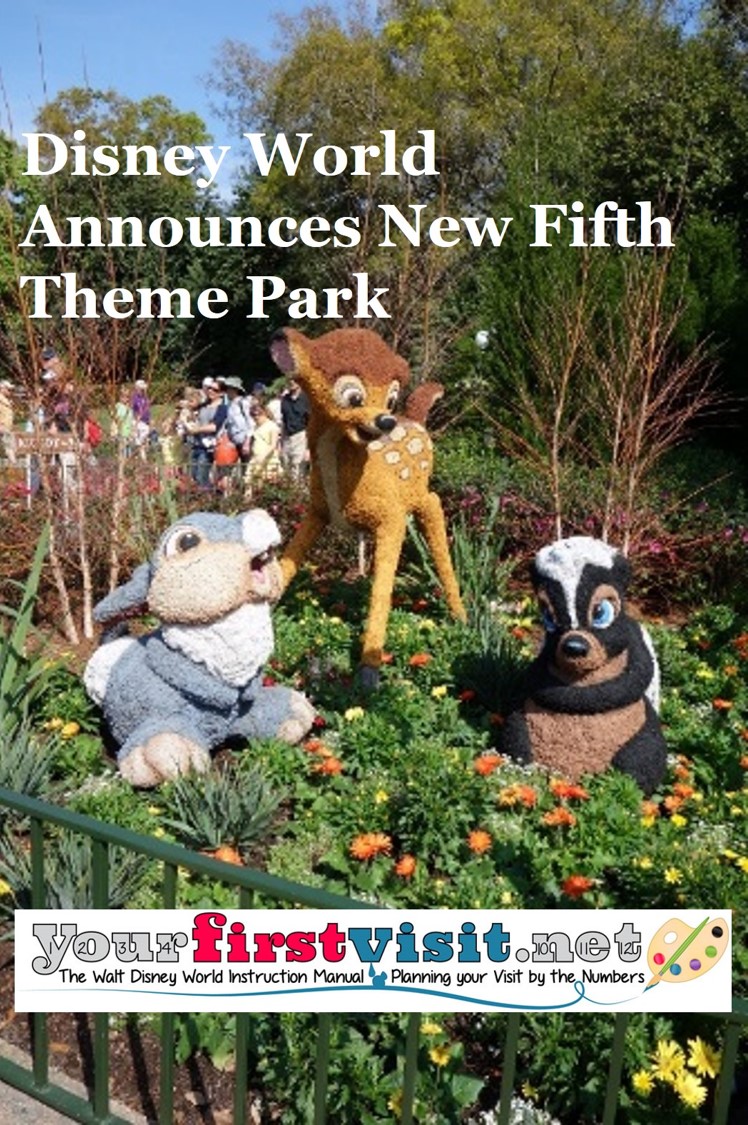
The new park will be themed to sadness and loss.
“Inside Out taught us once again what we have always known as story-tellers, that sadness is necessary to joy,” a Disney spokesman explained. “Well, actually, we think that’s what we learned from it—in fact, we kept falling asleep during the enthralling second act about filing systems for colored bowling balls, so never really made it to the end.”
The new park, to be called Disney’s Woeful Kingdom, will be built next to the Magic Kingdom, across from Frontierland and Adventureland, and will have its main entrance just to the west of the current Magic Kingdom monorail stop.
“Life is composed of lights and shadows, and we would be untruthful, insincere, and saccharine if we tried to pretend there were no shadows.” – Walt Disney
Conceived as both a new draw in its own right and as a way to relieve the press of crowds in the Magic Kingdom, the lands of the Woeful Kingdom will be opened in stages.
In fact, the first two lands, Abandonland and Deathland, will initially operate as extensions of the Magic Kingdom.
Later, as more of its lands open, Disney’s Woeful Kingdom will function as a distinct and separately ticketed fifth park, but easily accessible from the Magic Kingdom—similarly to how Disney California Adventure works in Anaheim today (although lower taxes compared to California means that Disney will continue to be able to afford the ” ‘s ” in Florida).
- Abandonland will largely feature rides based on Disney’s Toy Story series, which takes its narrative arcs from the eagerness with which children abandon everything that once they loved, and the devastation that such abandonment leaves behind.
- Deathland will have shows and rides from a more diverse set of Disney and Pixar films, including rides recapping the death of Ellie in Up, the death of Bambi’s mother, and the death of Anna and Elsa’s parents in Frozen. (Word is that their parents are being brought back in the Frozen sequel, just so that they can be killed again.)
Later, deaths and other bitter moments will be grouped more thematically into additional lands at Disney’s Woeful Kingdom, one themed to orphans and stepchildren, like Tiana, Aladdin, and Cinderella; another to losses of parents like Mustafa in The Lion King, Tarzan’s parents, Cinderella’s father, and Lilo’s parents; and another to losses of and betrayals by spouses, children, other relatives, friends, and presidential candidates.
Other lands won’t be quite so obviously targeted at younger children, and will have attractions more suited to the special despondencies of older children and their parents. Reportedly, one such land highlighting the sports teams of Cleveland, Ohio was well into design, but development was unusually shut down by the board of the Walt Disney Company because it promised to be just too sad to be borne.
Stories require conflict, challenge and opposition—something is at stake, and someone strives for that stake.
Sadness and loss raise the stakes. Sometimes the sadness and loss is part of the beginning circumstances of the hero, making that hero’s challenge more difficult and the hero themselves more admirable—this is the heart of all the orphaned or otherwise abandoned heroes in the classic Disney films.
Sometimes, as in coming of age stories like Bambi, The Lion King, and Frozen, the losses need to happen to clear the way forward for the hero to grow up.
And sometimes the devastating sorrow is put in the film just for sheer fun and dazzle.
Those who never miss a theme park about sadness and loss will rush to Disney’s Woeful Kingdom.
The new park will share but expand on the hotel, parking and transportation infrastructure already existing for the Magic Kingdom.
Five thousand more parking spaces will be added to the former location of the Richard Petty Driving experience in the Transportation and Ticket Center.
Also, a small looped route expansion of the two monorail lines currently serving the Magic Kingdom is being added, both to allow for more monorail capacity, especially on the already congested Resort monorail line, and also to open the far west side of the new theme park to a monorail station that will support hotel and cemetery development.
Guests at the Magic Kingdom and also at the Polynesian, Grand Floridian, and Shades of Green will be able to walk to the Woeful Kingdom, as well as to the graves, tombs and funeral services in the new cemetery and memorial area to be located on the southwest side of the new park, facing—yet never quite touching–the sunset.
Well known and, frankly, surprisingly good-looking Disney World blogger Dave Shute (author of the masterful yourfirstvisit.net, and co-author of the magisterial The easy Guide to Your Walt Disney World Visit, the best-reviewed Disney World guidebook series in the history of Amazon) noted that “this new park has been hiding in plain sight.”
He continued, in a shy yet graceful and sexy voice: “Disney had been able to explain all the Imagineer activity around the Toy Story components of Abandonland by hiding it as an expansion to Disney’s Hollywood Studios, but the tear-down of the Richard Petty area south of the current parking lots has been unexplained. Also unexplained has been all the monorail closures of the past few years, which most assumed Disney was doing simply to show that it could. Now it’s clear what all this activity is in service of—sadness and loss.”
There’s little detail yet available on parades and other entertainment at Disney’s Woeful Kingdom. It is, however, widely expected that the evening show will include guests chanting, in order, the nine billion names of God. On some future date, as the final, nine-billionth name is chanted, overhead one by one the stars will quietly go out, as all sorrow ends.
The first two announced lands are expected to be complete by the Magic Kingdom’s 50th anniversary in October 2021. However, it is also possible that construction will stop during the next recession and just sit there, abandoned for decades, rather like much of Epcot. After all, as Judy’s dad tells her in Zootopia, “It’s great to have dreams, so long as you don’t believe in them too much.”
If so, this will be yet another black eye for Disney World, joining recent difficulties such as last year’s conversion of the Polynesian Bungalows to a viewing area for the Electrical Water Pageant, the brief cancellation of FastPass+ a couple of years ago, the abandonment of a pain-themed DVC resort, dropping the addition of a Minnesota Pavilion to Epcot, and still no word on the groundbreaking for the high-speed option for leaving Rafiki’s Planet Watch.
Follow yourfirstvisit.net on Facebook or Google+ or Twitter or Pinterest!!
April 1, 2016 9 Comments
How to Decline a New MagicBand
TURNING DOWN NEW MAGICBANDS AT DISNEY WORLD
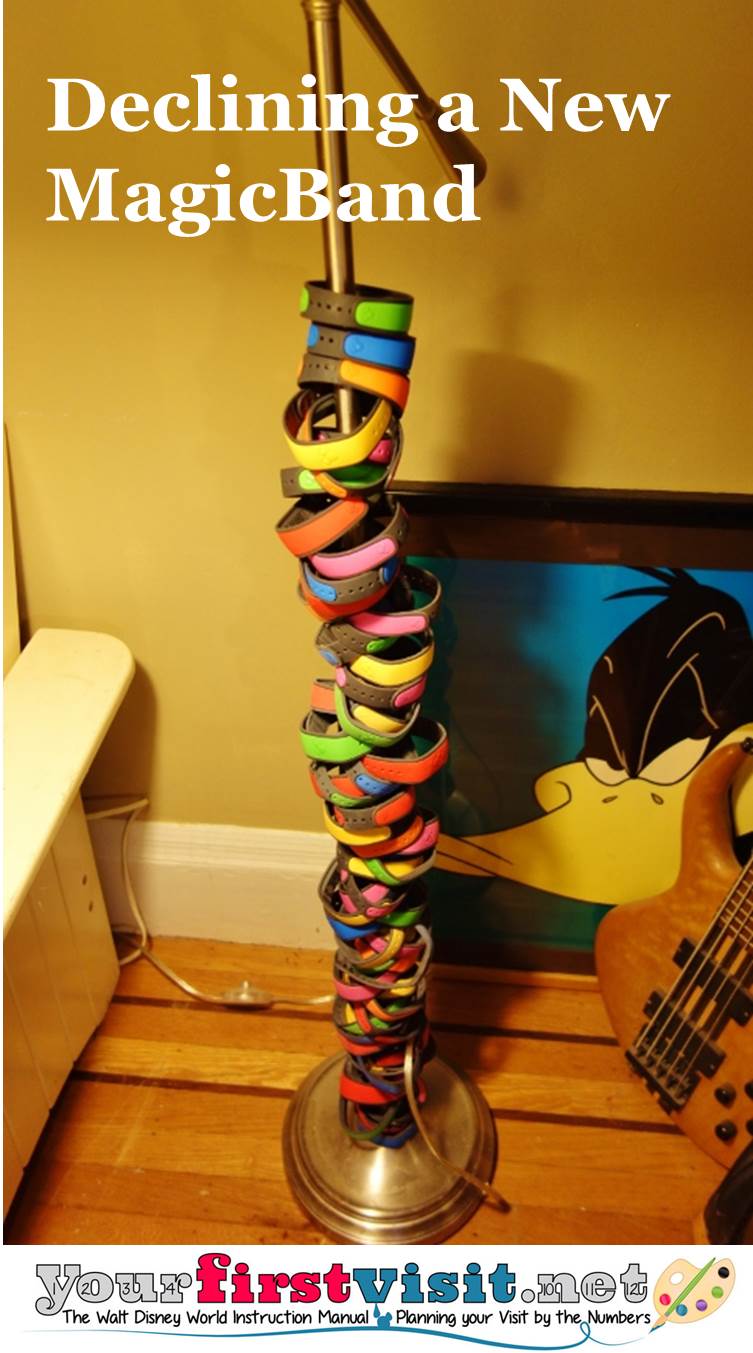
These wristbands can play the role of room key, park ticket, identification for FastPass+ return, link to your room account for charging, identify you to PhotoPass, and serve many other functions on your trip.
Until recently, while you didn’t have to use them (you could use standard credit-card shaped RFID cards as your room key, park ticket, etc.), you would get MagicBands created for you whether you wanted them or not.
If you wanted to, you could customize their colors and names and have them shipped to your home, like the ones below for our upcoming Port Orleans Riverside trip…
…But even if you didn’t want them, they’d still be made and waiting for you at resort check-in, in gray with the first names on the reservation.
Recently, Disney World has started offering folk who have gotten a MagicBand in around the last 12 months the opportunity to turn down a new one. (The last 12 months because the batteries do run out.)
So here’s how to decline MagicBands if you don’t want a new one.
First, go to the My Disney Experience MagicBand customization page, just like usual.
If anyone in your party is eligible to skip getting a new MagicBand–that is, they’ve had one issued in the last year or so–the option to decline will show up. Note the link circled in red in the screenshot below:
Curiously, for this upcoming visit to the Beach Club in November, Disney’s systems did not recognize me (which is keeping me up a night just a little), so note that I don’t have the option to decline–since it did not recognize me, it does not know that I already have 41 MagicBands from 41 different Disney World rooms, 15 from the last 12 months, and six more booked… (see the lamp at the top of the page).
So while you, too, can worry about why Disney has turned its back on me, the real point I am trying to make–and I do have one–is that if there’s a member of your party who is not known to Disney to have gotten a MagicBand in the last 12ish months, they will not be offered the option to decline, the way Annie and lovely wife Amy Girl are.
If you click the “Decline MagicBand” link, this is the screen that pops up:
Click the green “Decline MagicBand” button and you’ll be returned to this page:
Note that there’s now the label “Declined” occluding the MagicBand, and the link on the right has shifted to “Change Selection.”
Yes, you can change your mind. Just click “Change Selection,” and you’ll get this pop-up:
Just as you can keep changing the names and colors of the MagicBands you want, you can keep changing your mind about whether you want them at all until the system cuts you off when it’s time to ship.
WHO MIGHT WANT TO DECLINE A MAGICBAND

Disney’s systems tend to bust if you have more than ten MagicBands active, so if you are the sort who, for example, tries to keep your resort reviews up to date based on recent experience, then you either have to go into your bands and de-activate so that you have fewer than ten, or, more simply, decline new MagicBands.
See the image on the side for all the bands I’ve had to deactivate. The ones with the orange bar through the middle are deactivated.
The other reason to decline is if you are happy with what you have, and need no more. If you need no more MagicBands, you might as well avoid the waste of having one created for and shipped to you.
There’s no material incremental environmental impact from not having a MagicBand created and sent to you.
The carbon footprint of your travel to Disney World will dwarf by orders of magnitude the waste you avoid by skipping a new MagicBand. (The only truly sustainable vacation is drinking homebrew in your backyard.)
But avoided waste is avoided waste…
Me? Well, I still have some room on my lamp…
Follow yourfirstvisit.net on Facebook or Google+ or Twitter or Pinterest!!
August 31, 2015 3 Comments
FastPass+ and Its Discontents
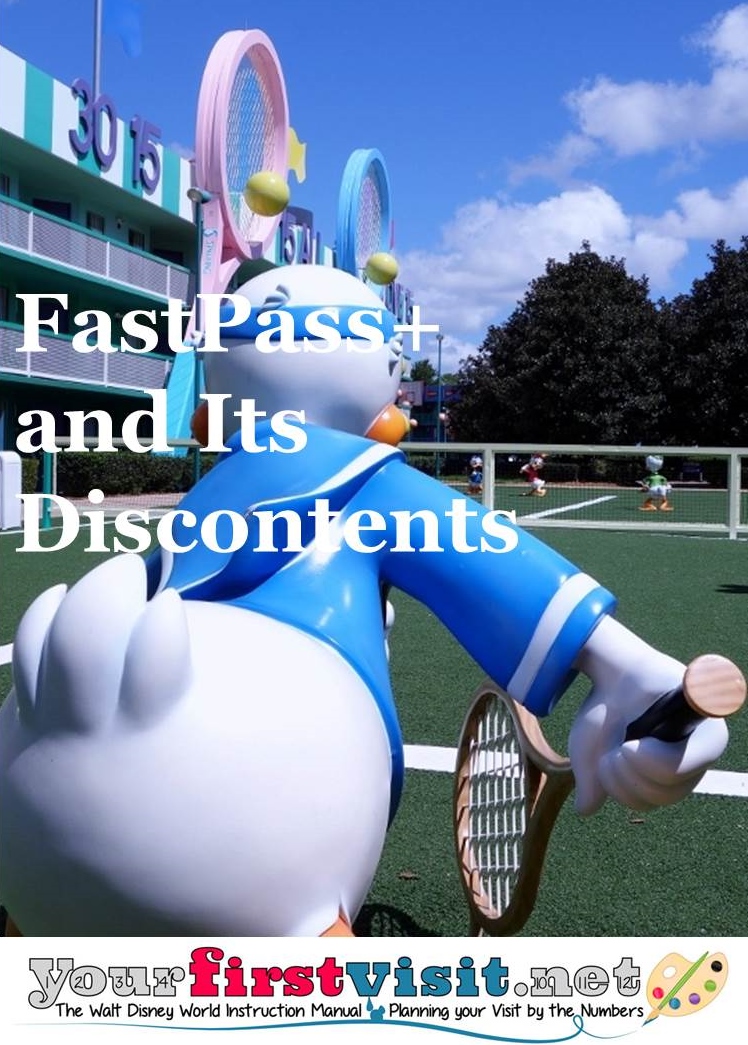
Some of them were heartfelt objections to FastPass+ compared to how things used to work. I appreciate all of them, but some objections, in the heat of feeling, perhaps overstated an issue or two.
I’ve picked out some of these comments for responses. The purpose of my responses is not to argue with people’s opinions about FastPass+.
FastPass+ is what it is, and it’s great for first timers who plan ahead and use resources like this site or the Disney World guidebook that Josh of easyWDW.com and I co-authored to help them.
However, for first-timers who don’t plan, it make things even worse, and it does force repeat visitors who are used to doing things a certain way to change their approaches to the parks. Some returning visitors love the new best ways of planning for and doing the parks; other hate them.
Rather, the purpose of my responses is to help clarify things for first-timers (and even returning visitors who haven’t done FastPass+ yet) who might be led astray a bit by some parts of the comments.
What follows is a sequence of quotes from the comments on my Facebook page (some are entire comments, others excerpts) edited only based on the spellchecker, then with my response following.
- L: “It is too crowded now, IF you can find an uncrowded time to go (they hardly exist anymore) you certainly CAN still go without a plan or schedule.”
- Me: Some times and days of the year are much more crowded than others. See this. Peak waits at Soarin are ~75 minutes on lower crowd days, and exceed 4 hours on the highest crowd days. A plan and FastPass+ helps avoid even those 75 minute waits. I’ve ridden Soarin probably 50 times, and never waited more than 20 minutes.
- H: “Liked that you can pre-book them but also didn’t think about the placement of the rides so we felt like we were running back and forth to different areas instead of walking in a normal path. Worst part is you could not get a new FP until all 3 were gone and even then you had to go to a kiosk with long lines.”
- Me: Once you book your FastPass+, you can then move them around in time and in order so that your flow through the parks is better—the earlier in your window you book, the more options you’ll have. The kiosks are indeed a major pain.
- A: “FP+ works well enough but it also at this time only lets you choose rides at one park. In my experience the times I could get were spread out thus eliminating the possibility to park hop. If this is the way it stays I will no longer purchase the park hopper option!!!”
- Me: You can only pre-book rides at one park. However, once you have used those, you can hop to another park and start booking any FastPass+ that might still be available there. Depending on how you schedule them, because of grace periods, you can do your FastPass+ in as little as 60 minutes. For example, if you have rides booked at 11-12, 12-1, and 1-2, you can do the first one at 12 (still in its grace period), the second next, and enter the third line at five to 1 (the beginning of its grace period). The better way to park-hop is to set your FastPass+ up for your second park, show up well before open at the first park, and ride there without long waits for the first few hours of operation.
- M: “Forget any kind of spontaneity since fast passes need to be planned well in advance.”
- Me: Indeed, you will get the most out of FastPass+ if you pick your parks well ahead of time and grab the FastPass+ that are most important to you as soon as you are eligible to do so. FastPass+ commits a park, and three periods in the day at that park. If you can do this, then you can be spontaneous about everything else.
- M: “As AP’s, we HATE the FP+ system. We live 1-3/4 hours from Disney and used to enjoy “bopping” over for an afternoon, doing a few of our favorite rides and then heading home. With FP+, this is no longer possible. With FP+, we could conceivable drive 1-3/4 hours over (each way), to wait in a standby line for an hour for 1 ride because FP+ is making the standby lines longer. We don’t necessarily want to plan when we go over or plan what we want to do when we get over there…We are not alone in this feeling. Others we have talked to are also considering giving up their AP’s because you can no longer go over and wing it at Disney. Everything needs to be planned in advance. Also dining at sit down restaurants as walk-ups is no longer possible.”
- Me: I think perhaps the people most harmed by FastPass+ are those who “don’t necessarily want to plan when we go over or plan what we want to do when we get over there.”
- C: “But we only planned our trip 45 days ahead so FP+ was not a benefit. They have taken the spontaneity and enjoyment away from the park experience.”
- Me: Most, but not all, of the most popular rides have plenty of availability 45 days ahead. On “spontaneity” see above. Some have found their enjoyment diminished; others find it unchanged, or even enhanced, as many of the comments on my Facebook page indicate. Disney CEO Bob Iger reported on Tuesday’s earnings call that according to their internal surveys, “so far what we are hearing … is overwhelmingly positive — basically, the percentage that rate it as “excellent” is significant.” While in the absence of the actual survey questions and the crosstabs on the answers you have to take such claims with a grain of salt, Tom Staggs had overall responsibility for the implementation of FastPass+, and was just named Disney’s COO and CEO heir-apparent. That would argue that the positive survey findings about FastPass+ are pretty valid.
- S: “Forced to run back and forth to make the ride times, and often a day or two ahead all fast passes were gone. Also never got to eat at any of the sit down restaurants (we had the meal plan) because everyone in every park had no tables available. We didn’t want to have to plan what days we were going to what park until we got there because of the weather… We also had problems the entire week with the magic bands letting us in the room which went on all week despite the staff “fixing” it many times.”
- Me: Yup, if you wait til the day or so before, your FastPass+ choices will be quite limited. The most popular restaurants have booked up months ahead for years now—that has nothing to do with FastPass+, and is the reason I suggest first-timers have their plans set more than 180 days ahead. Personally, I’d never pick a specific park based on weather, although I know some will avoid Animal Kingdom in the rain, and avoid both it and Epcot in extreme heat. I’m not an IT guy, but the level of technical issues that people are still seeing is unconscionable given how long the system has been operating.
- L: “At least with the old system you could check in at a ride, be given a time to return, then have time to look around the area instead of just dashing from one FastPass to another. It’s hard to justify spending thousands and just getting to ride three rides a day.”
- Me: My itineraries have people on ten to almost twenty attractions a day, and at MK they could easily have more if I wanted to wear people out. So while you can pre-book only 3 FastPass+ a day, you can see many more attractions than three. As noted above, if you can plan well in advance, you can set FastPass+ up so that you have much less backtracking than before, and no dashing about.
- M: “Fast pass is horrible. I think it’s totally unfair for those families who cannot afford to book months in advance or stay on property. They are penalized because maybe they can only afford one day or weekend to take their family on vacation to a park yet they basically have zero chance of getting on any of the more popular rides, in addition they are locked out of the best seating for any of the shows in all of the parks without a fast pass.”
- Me: I don’t know what affordability has to do with planning 30 or 60 days ahead. Disney resort guests have had special privileges compared to off-site guests for years now, and FastPass+ continues, rather than begins, that tradition. Disney hotels are always more expensive than off-site equivalents, especially so for large families. There’s no great answer for families that can’t afford to stay on property—although some will suggest double booking the first night at a value resort or Fort Wilderness to get the 60 day booking window.
- J: “You have to plan every single second of the day. There is no spontaneity and you are forced to follow a strict UN-vacation like schedule.”
- Me: Especially on busy days, it never hurts to plan. If you intend to arrive before park open, you should have your first two to four rides planned, and have a rough sense of where you intend to be the rest of the day so that you can book your FastPass+ to minimize backtracking. By no means do you need to book every second. But Disney World—especially for first timers who may never return—has always worked best if you treat it like a backpacking trip, not like a day at the beach. A backpacking trip is still a vacation, but one that needs a certain level of planning to help insure you don’t get lost, don’t run out of food, don’t forget your spare socks. FastPass+ greatly increase the penalty for not planning.
- R: “I absolutely despise FP+ …The worst of it is that rides that NEVER had lines before, now have lengthy standby waits.”
- Me: Yup, next-tier rides like Pirate of the Caribbean, The Haunted Mansion, DINOSAUR, etc., are now seeing longer waits.
- K: Most of my Disney trips were planned on short notice. I literally booked a flight at 6am once, and was in the park at 7pm that night. Even planning far out means 1-2 months for me. I just don’t have the luxury of planning that far ahead, nor would I want to!! Even if I knew I was going to Disney in 6 months, I wouldn’t know what park I wanted to be in on any given day. There are also health issues to deal with…they can destroy your plans – you must be able to be flexible in that situation. But they have killed the spontaneous and flexible trip.
- Me: I’ve addressed spontaneity and the penalty from not planning ahead above. Flexibility is also a real issue. Only at the lowest-crowd times of the year will you be able to change plans to a different park and get lots of great rides that day. We were there for 6 days last week (at one of the lowest crowd times of the year) and as a test I booked all our FP+ the day before or day of. While we had no trouble filling our time with great rides—everything was available at 10.30a at Epcot except MISSION: Space and Illuminations—some other great rides were just unavailable or inconveniently timed.
- P: “We spent 10 days and were never able to go on Snow White mining coaster.”
- Me: Anna and Elsa and the Seven Dwarfs Mine Train are often unavailable even at 60 days.
- B: “The tier system stinks bc I’ve got two boys who like two different tier one rides. It’s a pain! I miss old Disney.”
- Me: Agree, the tier system stinks. If you are able to arrive well before open, FastPass+ one of the Tier One rides and see the other at park open.
- J: “I go during the slowest times of the year ONLY. no fast passes needed.”
- Me: First-time family visitors who want to see all the best of Walt Disney World in about a week off of work will see lower waits any time of the year if they use FastPass+. Returning visitors who want to see only some of the high-wait rides and who can arrive before park open can do without FastPass+ at certain times of the year, especially at the Animal Kingdom.
- M “Hate it!!! I used to be able to finish Magic Kingdom by 1pm using my knowledge of the crowds and Fast Passes. Now I can’t use this system.”
- Me: No one has ever seen all of the Magic Kingdom by 1p—unless they started the day before on one of the open-for-24 hours days.
- D: “It’s simply too expensive. But without them, you only get to ride a few things all day. It sucks. Universal was the same way.”
- Me: There is no extra cost to FastPass+, they are free with your ticket. See above for seeing ten to twenty attractions a day.
- A “I thought FP+ was ok. I find it very annoying though with all the guests constantly on their phones using the disney experience app to change pass times etc… They just stop in the middle of the walk way.”
- Me: Yup. People have always picked remarkably annoying places to stop–you now see it more with phones, less with maps.
Follow yourfirstvisit.net on Facebook or Google+ or Twitter or Pinterest!!
February 8, 2015 9 Comments
Disney World in the Era of FastPass+
FASTPASS+ ONE YEAR ON
Note: my recommended FastPass+ for each park are here.
On New Year’s Eve 2014, waits at Test Track peaked at five hours, and exceeded three hours most of the day.
Were it possible for everyone to have reserved times to ride Test Track (like at a restaurant) ahead of time, every single person that rode Test Track that day could have ridden it at the exact same time with hardly any wait.
This is both the promise and the problem of FastPass+. The way you fix a restaurant that’s so busy that no one goes there anymore is to convert most of its capacity to reservations. But that means those without a reservation are out of luck…
The most popular rides at Walt Disney World commonly have more people willing to ride them than they have capacity, especially during the more popular times of the day and days of the year.
This capacity has to be allocated to some people—and not to others—based on some system.
Traditionally, it was allocated based on willingness to wait, first come, first serve.
People willing to wait whatever the current wait time was entered the queue, and people unwilling went someplace else. All kinds of strategies developed to minimize such waits, such as showing up before park open, getting in line just before park close, and going to Disney World during times of the year when waits are lower.
But the whole reason these strategies work is that so many people can’t or won’t take advantage of them!
They don’t want to, or can’t, get their families up early, don’t want to, or can’t, keep going all the way until park close, or don’t want to, or can’t, take themselves out of work or their kids out of school except during the traditional vacation seasons.
About 15 years ago Disney changed “first come first served” with the introduction of paper FASTPASS, and just about a year ago—January 23, 2014—Walt Disney World shut down the last of its old paper FASTPASS machines at the last park that was using them, Epcot, and completed its conversion entirely to the brand new FastPass+.
Paper FASTPASS reduced waits by assigning a low-wait return time later that day. You had to be in the park that day and in front of a specific ride to get one for that ride that day, and FASTPASSES were issued in the same first come, first serve fashion—those arriving early could get the most FASTPASSES and those arriving late (or on crowded days) would see fewer opportunities.
These old-style FASTPASSES in essence allocated low waits based on willingness to arrive early, willingness to defer riding until later in the day—sometimes much later–and willingness to backtrack in the parks (once to get the FASTPASSES, a second time to use them).
The new FastPass+ are profoundly different. You reserve three rides in one park per day online ahead of time for specific one hour windows, beginning 60 days out for those staying at Disney-owned resorts or the Swan or Dolphin, and 30 days out for everyone else. (Standby lines are also still available for those willing to wait in them.)
So now low waits are being allocated according to both old and new principles—arriving before open, getting in line just before close, and going during lower crowd periods still greatly pay off, but beyond this, low waits are allocated to those
- Who educate themselves and plan ahead—failing to do so is still the biggest barrier to a great Disney World trip, and why sites like this and books like mine exist…
- Who can stay at a Disney resort, as sometimes the most popular offerings book out within moments of the 60 day window opening, and other offerings book out between the 60 day Disney window and the 30 day “everyone else” window
- Who are willing to commit in advance to being in a specific park at a specific time
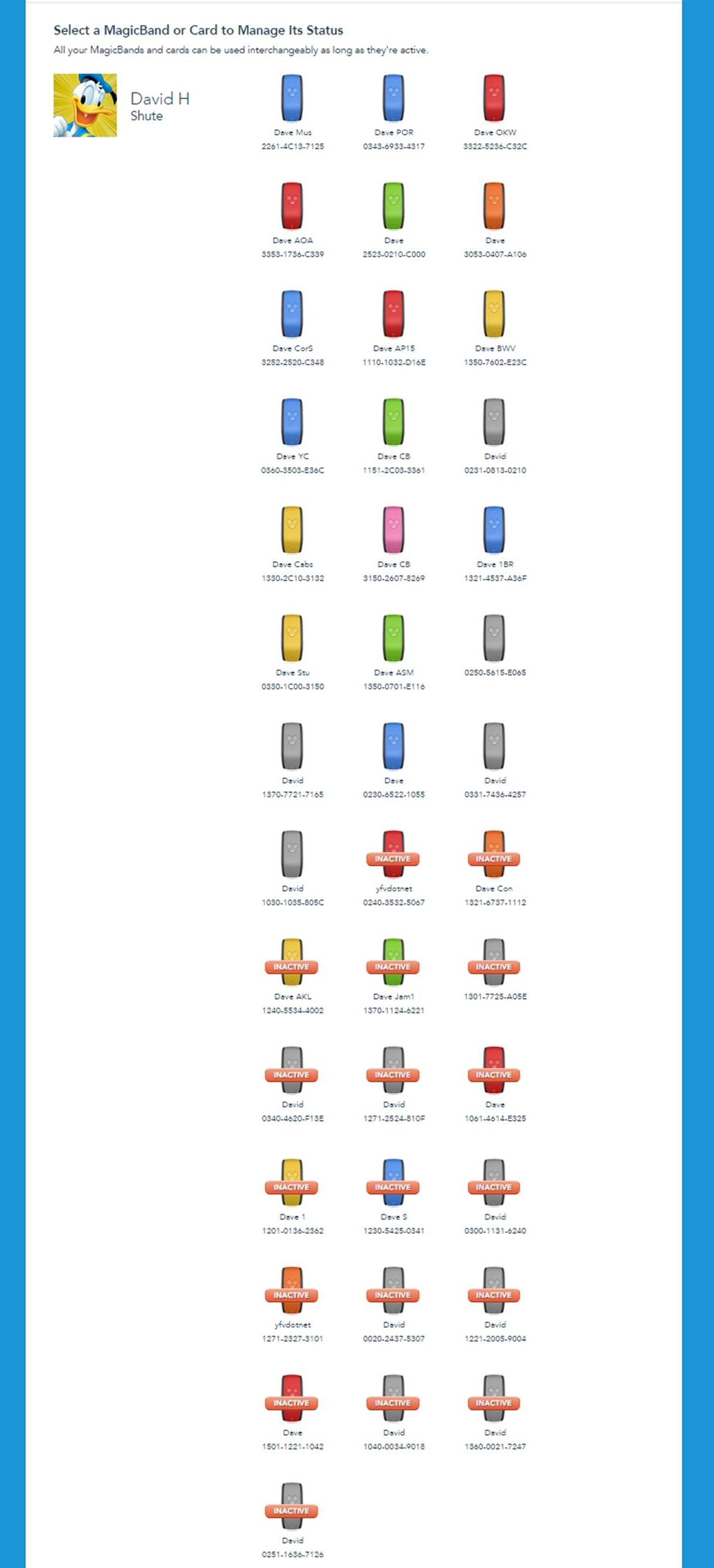
So, since the full conversion I’ve spent 59 days at Walt Disney World (and I live in Northeast Ohio, not Orlando lol) living with FastPass+, and plenty more days thinking and writing about it.
Some observations…
THE BASICS OF FASTPASS+
To use FastPass+, you need a My Disney Experience account and valid park tickets linked within it.
Then, beginning 60 days before check-in if you are staying at a Disney-owned resort or the Swan or Dolphin, or 30 days before use if you are staying anywhere else, you can book one hour windows to see three rides with minimal waits in one park. (Three different rides—no repeats.)
At two parks—the Magic Kingdom and the Animal Kingdom—you can pick your three from any of the FastPass+ rides offered.
At Epcot and Disney’s Hollywood Studios you pick one ride from a short “Tier One” list and the second and third from a longer “Tier Two” list.
Many rides that offer FastPass+ are unwise to choose, and the tiering at Epcot and Hollywood Studios makes it hard to see everything in one day without arriving before park open.
My suggestions on which rides to pick for each park are here, aimed for older kids and adults. You’ll find more good advice in Josh’s cheat sheets here, especially for families with younger children more focused on characters than I am.
And of course our guidebook, The easy Guide to Your First Walt Disney World Visit, is the only guidebook written from scratch for FastPass+.
Once you’ve used your first three pre-booked FastPass+ you can then pick another from whatever might still be available that day, then another after you’ve used that, etc.
HOW FASTPASS+ IS DIFFERENT
Under the old FASTPASS system, you did not—could not—book rides before arrival. Rather, on the day of your visit you would walk to an eligible ride and grab a paper FASTPASS for it that would entitle you to return to it with minimal waits within a specific window.
Return times were delivered in order—as more FASTPASSES were taken, return times would stretch later and later into the day. For the most popular rides, all FASTPASSES could be distributed by late morning.
You could hold a limited number of FASTPASS at a time, and were eligible for another either two hours later or after your FASTPASS return time—whichever came first.
Within these constraints, so long as they were still available, the return times worked for you, and you had the stamina, you could get as many FASTPASSES as you wished, and could get them multiple times for the same ride.
This worked pretty well, especially for those who arrived before park open or on lower-crowd days.
An early arrival meant you could see at open one to four (depending on the park) rides with hardly any waiting that would later build long lines, and see several more longer-line rides with low waits via FASTPASS —e.g. at 10, 11, and 12.30ish.
After this you could keep going, but the most popular rides would see later and later return times, and the two hour gap between FASTPASS eligibility would begin to tell.
For late arriving guests on busy days FASTPASS did not work so well. Some rides would be out of FASTPASSES and other popular rides would have return times very late in the day.
The new FastPass+ brings its own set of challenges.
- You need to commit to a park and a time of day ahead of time
- You can’t pre-book the same ride multiple times in a single day
- The most popular rides may be booked before the 30 day window opens—even at the 60 day mark, and
- Tiering at Epcot and Hollywood Studios makes arriving before park open important for those who want to see the most popular Tier One rides in a day—seeing one at park open, and the other via FastPass+.
This has caused a lot of gruff among experienced returning visitors who are used to doing the parks in a certain way, and need to learn new ways to do them, and in particular those used to pulling FASTPASSES to re-ride a single ride multiple times over a day.
But for first-timers, FastPass+ is just great.
FASTPASS+ FOR FIRST-TIMERS
First-time visitors who want to experience the best of Walt Disney World already should know where they will be well in advance, as this enables them to book the best dining.
They should already be booked in a Disney hotel, as this gives advantages for booking both dining reservations and FastPass+ booking windows…and it’s more fun!
The lost opportunity to re-ride the same ride a lot in a day without waits matters less to first-timers, as most will be more interested in seeing the full variety of rides than in re-riding some at the expense of seeing others.
FASTPASS+ FOR RETURNING VISITORS
For experienced returning visitors with a particular way of doing the parks, FastPass+ often presents a difficult transition. Other than booking a few dining spots, they aren’t used to park commitments well in advance.
- The lost opportunity for easy re-rides—and the tiering at Hollywood Studios and Epcot—means that some old ways of doing things just don’t work any more without much longer waits. Re-rides are still do-able—you can ride a popular ride three times easily, at park open, on a pre-booked Fastpass+, and by getting in line just before park close—but isn’t as easy as it used to be.
- The limit of three initial reservations at one park represents a loss to those who in the olden days would go from open to close pulling 6 or more paper FASTPASSES along the way. More FastPass+ will be available after the first three, but availability is often scant at the most popular rides.
- Standby by waits have gone down a bit at the most popular rides, but have gone up a lot at the next level of rides like Haunted Mansion, Pirates of the Caribbean, Jungle Cruise, Dinosaur and Spaceship Earth
You can buy your way out of some of these issues.
The flip side to all this is that if returning visitors do commit to a park, have enough days in the parks, and book their FastPass+ well ahead, they can sleep in a lot more than they used to be able to, as the ability to pre-book top rides in the afternoon or evening makes arriving at the parks before open less necessary.
Ditto for being at Disney World on higher crowd days. While all those people were waiting three to five hours for Test Track on New Years Eve, thousands of others had pre-booked their rides for the day via FastPass+ and had short waits even on the busiest day of the year.
An early arrival, FastPass+, and a mid-day break make higher-crowd days much more bearable than they used to be.
And remember that the reason that early arrival or certain dates works is that most people can’t or won’t get up early enough to hit park open, or are unwilling to take their kids about of school to go during lower-crowd periods.
So FastPass+ can make the experience of such people better, as it better ties their ability to book great rides with low waits to the times they actually want to be in the parks.
THE FUTURE OF FASTPASS+
FastPass+ has two purposes: improving guest experiences (although, as noted, that doesn’t work for all old ways of touring the parks) and improving Disney’s economic performance.
The economic part has multiple pieces, but the most important point is keeping people in the Disney parks.
Jay Rasulo, Senior Executive Vice President and Chief Financial Officer, commented on this a few weeks ago at the January 2015 Citi 2015 Global Internet, Media and Telecommunications Conference
“…[A]ll of the communications about MyMagic+ have really emphasized that the biggest benefit we believe to our company and our company’s financial performance will be that people who pre-plan spend more time with us on their trip to Orlando.
So for the last 30 years, people have come to Orlando basically for an eight-day vacation, on average…The question is how many of those eight days are they going to spend at Walt Disney World and how many of those eight days are they going to spend elsewhere among other attractions that are in the Orlando area?
We know that when people plan at home before they arrive they spend more time with us. So enabling them with this planning tool called MyMagic+ has [meant that] … they will spend more time with us. So that’s what you are beginning to see in the financials.
…[W]hen you bring technology to it, there are whole new ways that guests can experience … everything … from better planning,[to] more insightful planning, itineraries that they carry around with themselves electronically, the recognition of where they are, the ability to tap into a system that tells them where the park is less full than where they are right now, etc., etc., [it] really does enhance their experience.
And I think that you are going to see that as a fundamental belief system that every one of our guests enters our parks carrying their own personal computer. We’ve enhanced our knowledge of their whereabouts with technology and we are going to continue to build on that… at Walt Disney World…”
Another piece of the both the customer experience and economic rationales is that people waiting in lines aren’t having fun and aren’t spending money. Consider Fantasmic, where even with FastPass+, because the best seats are still first-come first-served, up to ten thousand people wait 30-90 minutes. They don’t want to be in this line, and they aren’t spending money elsewhere.
The answer is an all-reservation system, where every bit of capacity can be reserved in advance. There’s a lot of arguments against this, the most important being that theme parks are designed to have tens of thousands of people in queues. As a result, they don’t have enough circulation space for the same numbers out of queue (this is why the Disney parks can “feel crowded” on low-wait days—because hardly anyone is line).
It would be very hard to retrofit the current parks to an all-reservation system. But I wouldn’t be too surprised to discover that some of the new areas being developed at the Animal Kingdom and Hollywood Studios launch as FastPass+ only…
What do you think?
(Note: there was much discussion of this post on my Facebook page. For responses to some of the points there, see this.)
Follow yourfirstvisit.net on Facebook or Google+ or Twitter or Pinterest!!
January 27, 2015 35 Comments
(Mis)understandings from the 2014 Disney Data and Analytics Conference
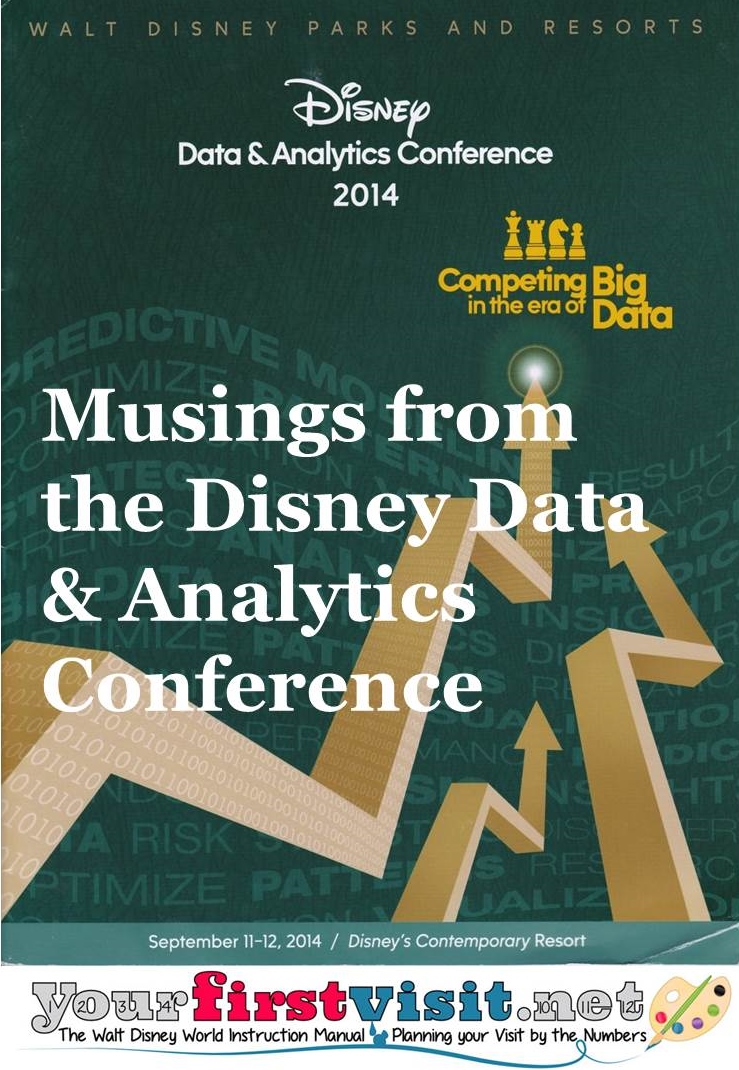
(It was canceled in 2013, perhaps because so many people who would have been involved in it were instead working to get FastPass+ back on track.)
While the conference is open to anyone willing to pay, the vast majority of attendees are Disney analytic folk and their software allies.
At the 2014 Conference in September, of the 800 or so attendees, more than 500 worked for one or another branch of Disney—particularly Parks and Resorts, but also units ranging from ESPN to the Disney Theatrical Group—the Broadway gang.
All are brought together to learn more about the use of data for business purposes, and the overwhelming attendance by Disney folk also means that you can try to infer what Disney is thinking about from the program offerings.
In 2014, the first day was Disney-only. Note some of the discussion topics (click to enlarge)–the keynote that began the day was “NGE: Leveraging MyMagic+ Data for a Better Guest Experience.” (“NGE”= “Next Generation Experience”–the overarching name of the program that includes “My Disney Experience,” FastPass+, MagicBands etc.) A later discussion was a panel on personalization. My thoughts on personalization, such as they are, in response to the 2012 Analytics meeting are here.
After that, the public sessions began—the Disney folk stayed, and were joined by data and analytics professionals from all kinds of businesses, by a number professors of management science—and by one consultant/blogger/guidebook author.
Billy Beane did the keynote that began the public session, and was wonderful. Depending on the audience member, his topic was either the use of under-appreciated data to gain a competitive edge, or about Brad Pitt, Angelina Jolie, and the filming of Moneyball, the book on the analytic efforts of the Oakland A’s. For either audience the talk was great–highly philosophical.
Then a number of breakouts and exhibit hall sessions were offered. New in the exhibit hall this year was booths staffed by Disney folk themselves—e.g. the team that builds the MagicBand near and far-field readers was there, as were some of Disney’s scientists from their Pittsburgh and other research operations.
The program from the first public day:
And from the second:
And some notes I took:
Ha! Not really…
But here are some things I thought I understood, learned or discovered over the course of the Summit:
During the course of a presentation of the analytics team behind the My Disney Experience app, one of the presenters commented that “the web page is for planning, and the app is for near-visit and in-park use.” This makes perfect sense, given the limitations of each—but I have never heard the distinction so succinctly put before. Frankly, the website is almost always easier to use, and sometimes more up to date, than the app—so it should be the first place you go for changes unless you are in the parks themselves.
Disney continues on a pathway to transform itself and use the data it is creating. One senior presenter noted that “I have frequent conversations with Bob Iger about how to create a more data-driven culture at Disney.” A much more junior analyst noted that “analytics is traditionally separate from operations, but we are seeing analytics being built into operations more.”
An example: there’s two types of MagicBand readers (or, strictly, RFID readers, since plastic tickets have RFID now too.) We are all familiar with the first kind, the ones you tap your bands on—to get into a room, to enter a park, for FastPass+ return, to buy stuff. These have limited range.
A different reader can read your MagicBand at a distance—I saw them in the exhibit hall and talked to their builders. It’s a black thingy that looks like a stereo speaker (like a small one if you are over 40, or like a large one if you are under 40). There’s more than 8oo of these distance readers at Disney World, and so far as I could tell from the conference, their promise is still largely untapped.
Take an example—Disney now can know exactly how many people are in Epcot at the beginning of IllumiNations, which of them are closer the bus stops and which are at the further end of World Showcase Lagoon, what hotels they are staying in, and which of them arrived at Epcot by bus. It can use this data to optimize the destinations of the waves of buses after IllumiNations to minimize total bus waits, but, so far, it seems in general not to be using data much this way.
(It’s using new data a bit. For example, the ability to tie a ride photo to a person comes from several of these far-field readers operating in tandem to geo-locate a MagicBand.)
Anyone who has consulted to or been a member of large organizations knows why. Operations are run by operators, not analysts, and new analytic approaches in the short run just create a burden on the operations team for their design, data gathering, testing, re-training and implementation. So almost everywhere “the way we’ve always done it around here” gets in the way of the optimal. A senior speaker noted “we create and store data on a bet that it will have value in the future,” and that future has not yet arrived.
So despite all the changes from FastPass+ in the last year, none of us has yet experienced a Disney World visit fully informed by data…this will come, but it will unfold in parts and pieces, over time.
By the way—the data Disney will use to work all this is not stored on your MagicBand.
Your MagicBand has two identifying systems, one for secure nearfield transactions using your pin, and the other for non-pin near and far-field transactions like entering the park.
MagicBands and their nearfield readers query each other to make sure they are communicating with authentic Disney devices, and then the only info grabbed by the system from your band is an alphanumeric code. The code is then pulled into Disney’s databases behind the scenes, and it’s those behind the scenes secure databases that have all your relevant data—for example, matching who you are to a valid park entry to a valid FastPass+ at that time, and then communicating back to the operating systems to make the FastPass+ reader turn green.
So while hacking of the behind the scenes databases is always possible, snatching your ID off your MagicBand is both hard (because of the validation handshakes) and also not even important, as all the bad guy will get is the alphanumeric identifier, not of much use without access to the secure behind the scenes databases.
But still, for this data to be useful Disney needs to know you are you.
Someone who has not been involved in creating a data warehouse would be astonished at the kinds of issues that emerge in them. The most profound of these is a single nomenclature—having a single and unique code that applies to a single and unique concept, and links all of the interactions of that concept within the system.
Take who you are. I have had many interactions with Disney over the years, using many variants of my name (“Dave Shute” to “David H. Shute” with other versions and typos in between), many credit cards, several different phone numbers, different email addresses, different physical addresses, etc. Plus, shockingly enough, there’s a lot of guys who have my exact same first and last name.
Now Disney has a better chance of improving my experience and lightening my wallet the more it knows about me—but it needs to know it is talking with me, despite whatever email, phone number, credit card, or intentional or unintentional name variant I am using!
The beauty (from a a data warehouse point of view…) of My Disney Experience and MagicBands is the much richer, more accurate, and more specific association of my identity with my touch points with Disney World—both in the planning process and at the resort.
It’s this much tighter linkage of identity and experience data that powers the whole potentiality of the NextGen project—not FastPass+, which is simply the hook that makes us willing to allow Disney to capture this connection of identity and experience.
Identity raises fascinating issues in other contexts as well. Most profound among them is the misleadingly simple question of “what is the product?”
Take a simple example. Under traditional management approaches, “Frozen” is the overarching brand, which then has sub-brands of all the characters in it, some of which cross to other brands—e.g. Anna and Elsa work both separately and as a pair of sisters, and work both as Frozen characters and as part of universe of “Disney Princesses.”
But say you had dolls for all the major characters for single unit sales, and wanted to know how to optimally group them for package sales. You could guess based on rules of thumb, heuristics, and standard literary analysis.
Or you could use data. With enough sales, purchaser identity data, and analysis, you could identify which subgroups of characters are bought by the same family—e.g. just as a made-up example, you might discover that Elsa is often bought alone, but rarely Anna alone—that Anna is sold most often with Elsa, or with Kristoff, yet all three are rarely bought together.
This analysis begins to accurately define the higher order groupings of the components of the offering which otherwise would take mind-reading, some of which will be obvious but some of which are likely to be novel. That is, it helps identify and define the actual products as customers see them in their own minds…
Take this analogy to the parks. We think of there being parks, and within them lands, and within them attractions. We know that in general some attractions are more attractive to definable demographic groups than others—especially by age. But everything is much more subtle and various than that. With the data becoming increasingly available to Disney—plus some guest surveys—all of the different ways that the parks are experienced, and how pleasing they are, can be used to more sharply understand—and manage to– all the different “products” actually offered.
But first Disney needs to start using much more the data it’s already collecting from the far-field readers!!
Follow yourfirstvisit.net on Facebook or Google+ or Twitter or Pinterest!!
October 23, 2014 22 Comments
Itinerary Design in the Era of FastPass+
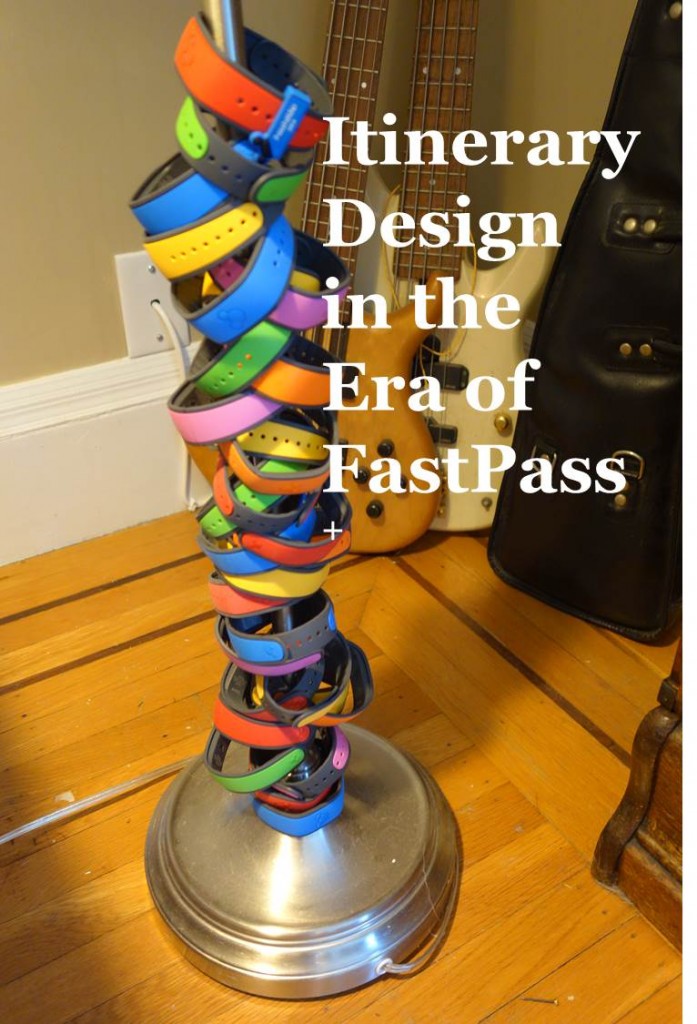
Up until the era of FastPass+, itineraries that minimized waits required both backtracking (to get, and then use, legacy FASTPASSES) and early mornings.
In fact, the scarce resource before FastPass+ was early mornings. Because most people don’t want to get up early—or can’t get their preschoolers/ teens/ husbands up early—the parks are always relatively uncrowded at open. So the way to minimize waits was to arrive well before open, and at open hit rides that would build lines quickly; you’d then start grabbing legacy FASTPASSES for later and do lower wait rides in between FASTPASS return times.
Under FastPass+ this still works fine—at least so far. You can hit a park early, and do (depending on the park) at least two and perhaps as many as four rides in the first hour that later in the day will take hours of waiting. Your FASTPASS+ you’d use later in the morning and early in the afternoon.
But under FastPass+, if you have enough park days, you can skip a whole lot of mornings.
Unless you are on a short trip, what’s scarce under FastPass+ is not mornings, but rather park days, as each added park day gives you three more FastPass+ to pre-book. With park days after the first four going for about $10.65 per day per person, this is a pretty good deal. Because, remember, the reason the parks are least crowded at open is that PEOPLE WANT TO SLEEP IN.
FastPass+ lets itineraries be designed that let people sleep in.
For example, here’s my old Autumn-Winter-Spring, pre-FastPass+ itinerary:
Note the seven ticket days, need for a hopper, two mornings off, five early mornings, and two particularly long days–Sunday and Monday.
Above is my FastPass+ based itinerary for similar weeks. Nine ticket days, but no hopper–so it’s actually less expensive.
It has four mornings off–twice as many–and no comparably long days. Moreover, breaking Animal Kingdom and Hollywood Studios into two half-days each makes seeing the shows at those parks easier, and limits the walking and backtracking at them each day.
Here’s a shorter variant. Losing a day but keeping the same amount of park time loses a couple of mornings and adds a longer day at Animal Kingdom–a better option, when workable, than doing Hollywood Studios in a day, as getting to HS before open and staying through Fantasmic can make for a long day.
FastPass+ lets you arrive late and then hit typically high wait rides with hardly any delay at times when under the old system you’d either be waiting a while or looking at very late return times. At the cost of extra ticket days, you get more mornings off!
Follow yourfirstvisit.net on Facebook or Google+ or Twitter or Pinterest!!
June 4, 2014 3 Comments


